Please Note: This post is about a salmonella outbreak that occurred in several parts of the United States in winter and spring 2021. While that outbreak has passed, cleaning and disinfecting your feeders is always a good practice.
I’ve lived next to the same retired couple for 20 years. They’re kind with words and consistent with seed. Their place is breakfast for the birds. My place is the bathroom. I saw my first Steller’s jay on our shared wood-slat fence last spring. Exciting. But I’ve cleaned up bird poop for 20 years. Not exciting. I’m regularly hosing down my backyard because my neighbors keep a full bird feeder in their front yard.
Well, they did until this year. I walked the block last night. Their bird feeder is empty and cleaner than I’ve ever seen it. As it should be.
Eastern Idaho, where I live, is in the middle of a salmonella outbreak. It’s not a localized occurrence. Birds across the West are sick and spreading the illness as they congregate then migrate. Cases are coming in from Washington to Utah and to the east, North Carolina is having trouble too.
While bird feeding is experiencing a pandemic boom in popularity, feeding birds at this moment is having dire consequences. Birds are dying in no small part due to bird feeding.
You can still enjoy birds. But it’s time to remove seed and take down the feeders.
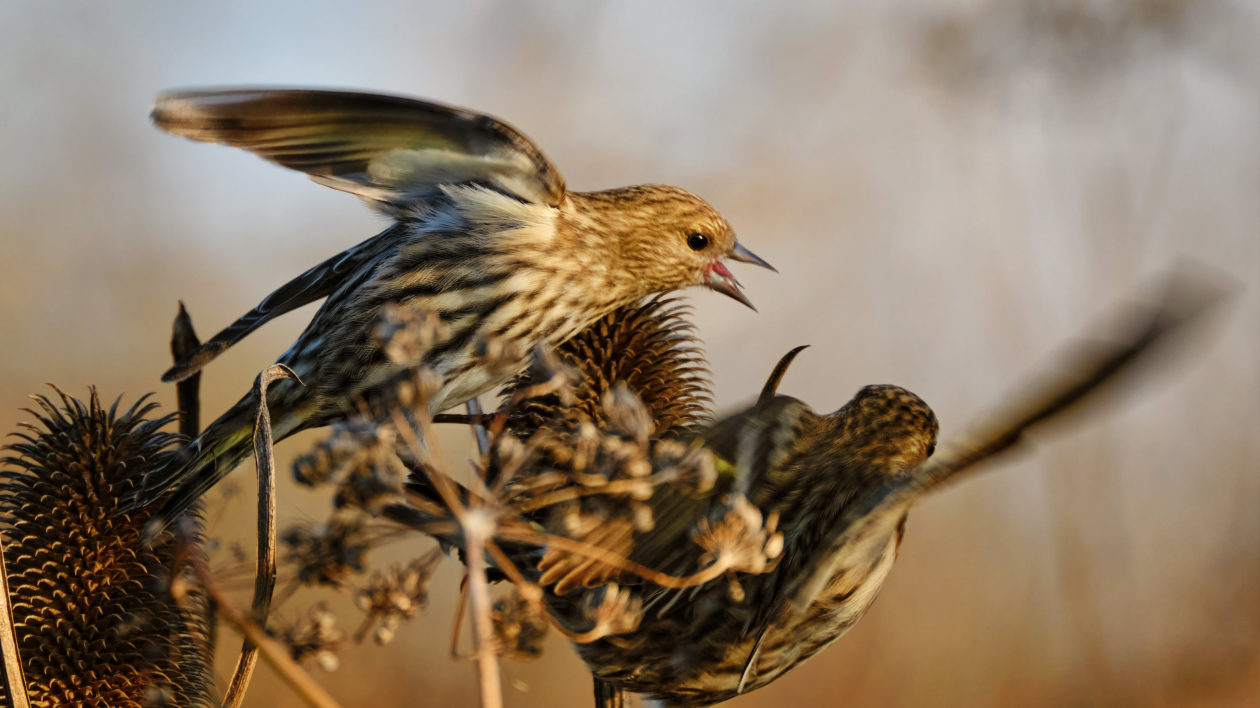
Outbreak
Songbirds are prone to salmonellosis, commonly called salmonella. Pine siskins are songbirds and they experienced an irruption over the winter. That’s a population explosion so there’s a lot of them flitting about this winter. Many of them are sick.
“This is the biggest outbreak I’ve heard of and I’ve been following birds for 25 years,” says Nicole Michel, National Audubon Society director of quantitative science. “It all ties into pine seed crops in the boreal regions where they usually are. There weren’t enough seeds so they came south. They’re weak because they’ve traveled farther than they’re used to and they’re congregating wherever they can eat.”
Salmonella starts when bird food gets wet. That’s how the bacteria grows on seed then it spreads through feces dropped in the same place. Salmonella is a fatal bacterial infection for birds and it’s hitting siskins hard because they congregate around feeders, but the outbreak isn’t species-specific. Anything eating seed in your yard, resident or migrator, can spread or contract salmonella. The three Ds of symptoms include ‘depressed, drowsy and diarrhea.’ Depression won’t be obvious in wildlife, but drowsy will. Infected birds close their eyes often and they puff up, like they do in cold weather, but they’re not cold. They’re sick.
California started seeing more cases in December. Other states are seeing an uptick this spring as the bacteria continues to spread, which is why more state agencies are asking people to remove their bird feeders.
“When large numbers of pine siskins congregate, the disease can spread rapidly causing high mortality,” says Krysta Rogers, California Department of Fish and Wildlife senior environment scientist and avian disease specialist. “Most birds die within 24 hours of infection.”
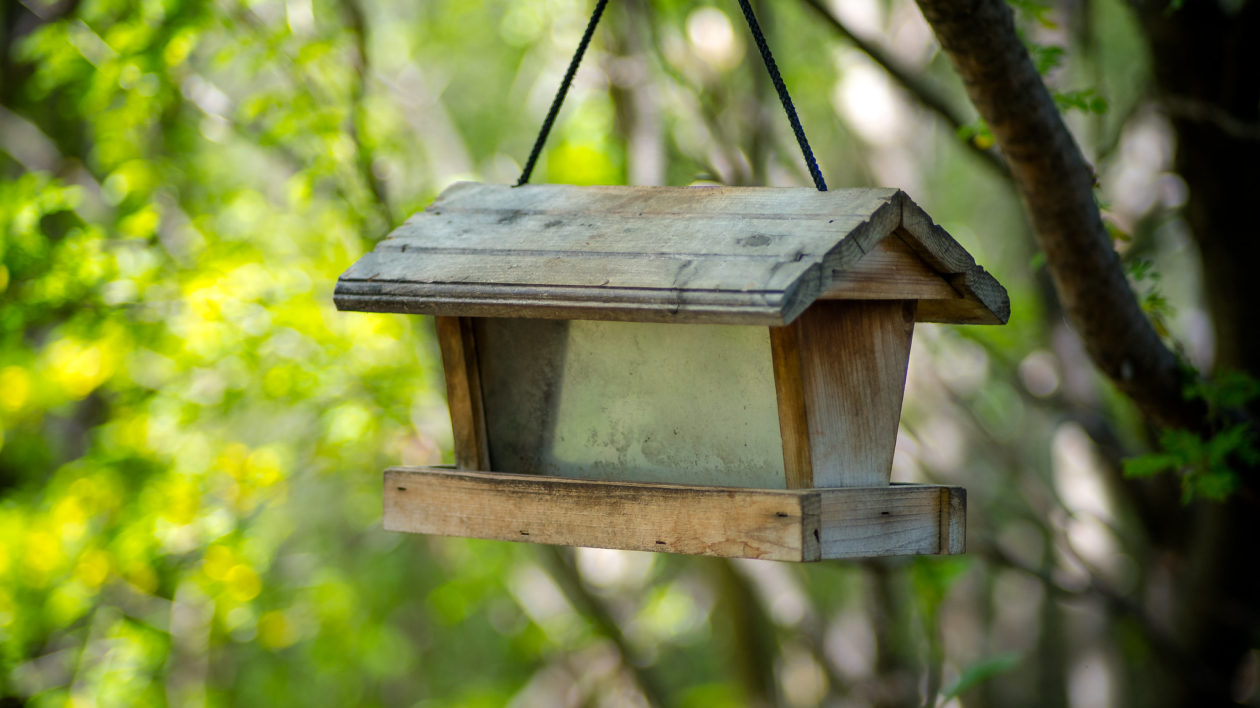
Clean Your Feeders
What those birds leave behind, feces and germs, lingers and it comes in contact with anything else enticed to perch nearby. That’s why you have to clean.
Clean feeders once a week with warm soapy water in normal years. Clean them several times a week during salmonella years like the one we’re in now. Better yet, clean it with one part bleach to 10 parts water.
Soak the whole thing in that solution for about 10 minutes then air dry the container while you remove spent grain and other waste from the area around and under the feeder hanger. Put on gloves before you clean and wash your hands after handling equipment or collecting dead birds.
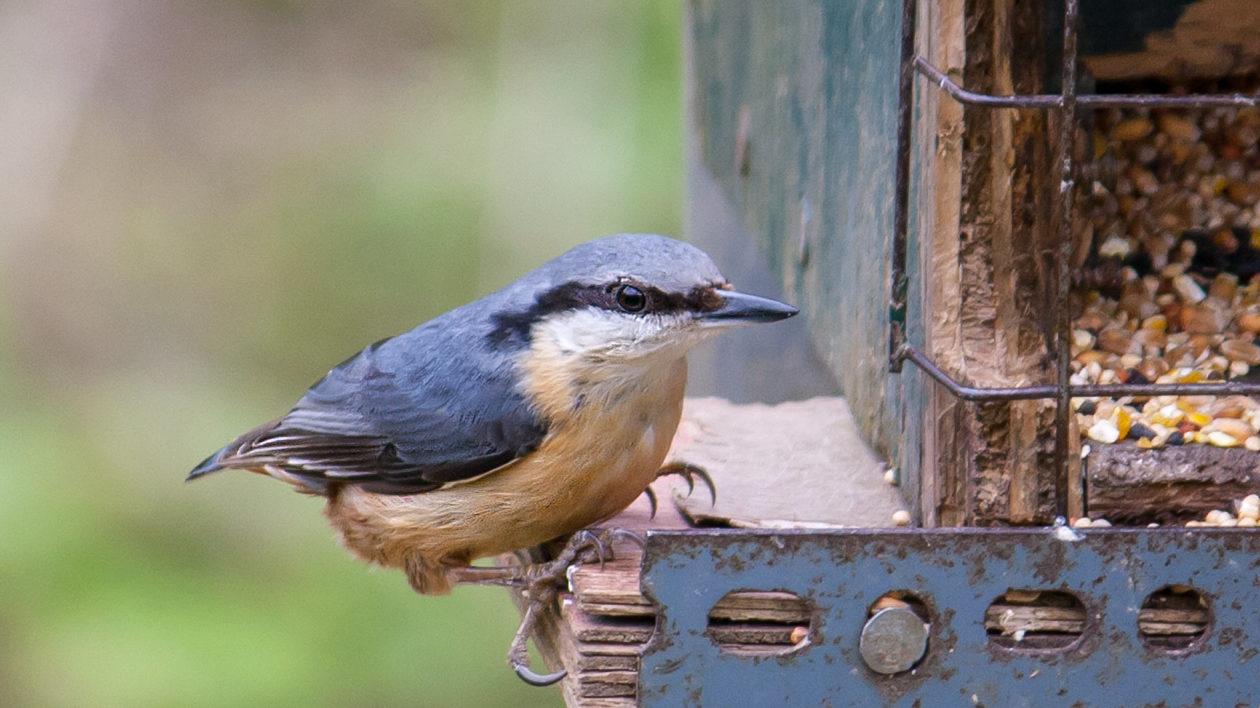
Encourage Avian Social Distancing
Especially this year, don’t stop at cleaning. Put your feeder away for a month. Michel, based in Portland, Oregon pulled her feeder for two months. If you must rehang your cleaned feeder, hang it empty.
“There’s a lot of other food sources they can still find,” Michel says. “The risk of death by starvation is lower than the risk of death by salmonella if you keep a contaminated feeder up.”
It’s the concentration of birds in one place that spreads the problem, but they won’t hang around if there are no hand-outs. The birds need to social distance to save themselves. And not to worry, they won’t starve without your supply.
“Although stopping feeding may seem like it will harm birds, in reality, they use feeders as just one source of food and will quickly disperse to find other food sources and in so doing, reduce transmission of this disease at feeding sites,” says Tempe Regan, Idaho Department of Fish and Game regional diversity biologist. “Sanitation is critical and it is your responsibility to ensure your feeders are not facilitating disease transmission.”
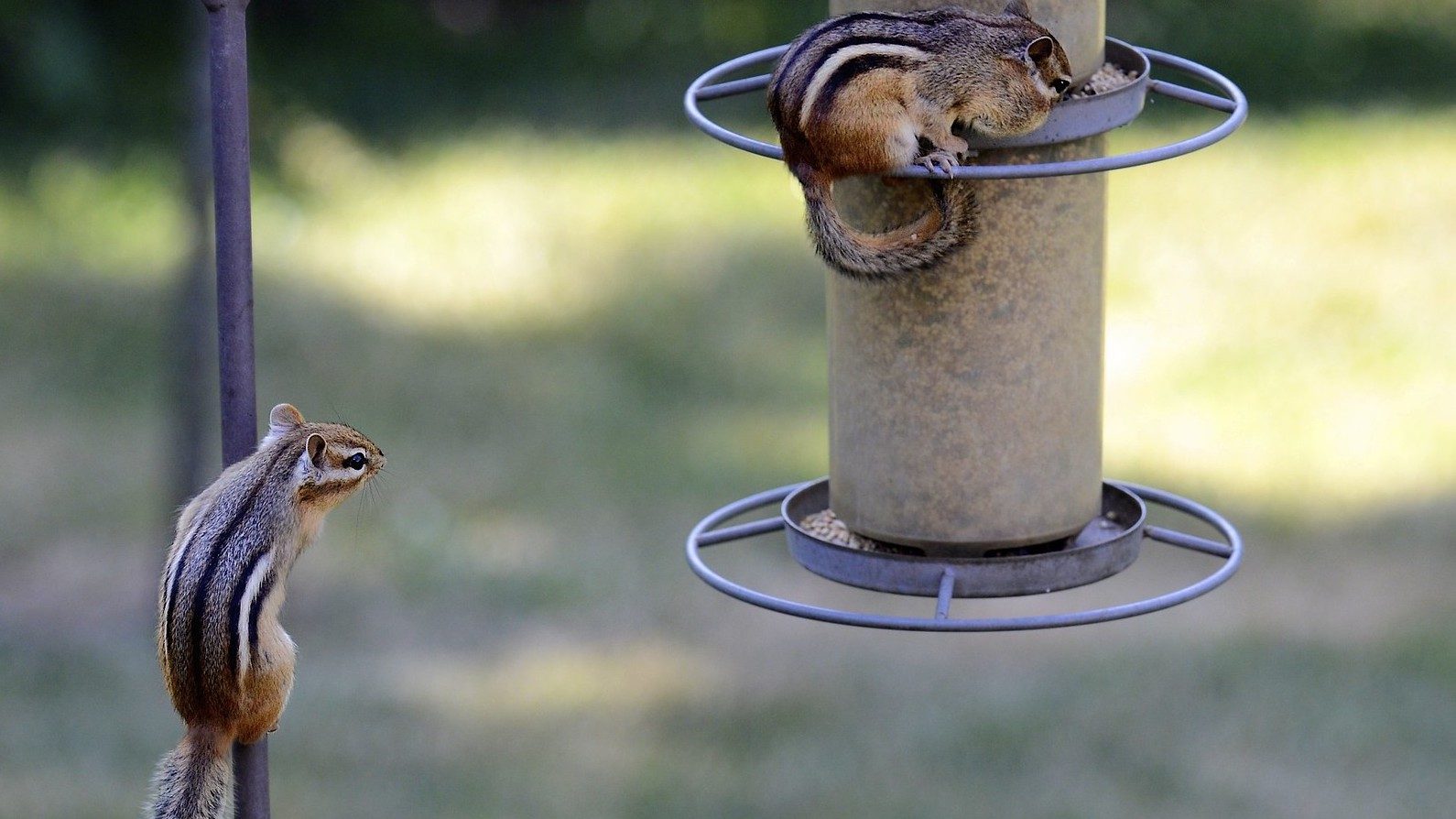
Dogs & Cats
Disease transmission to humans is possible. In mammals, the symptoms are more like food poisoning, but pets are a bigger concern especially. The drowsy symptom mentioned above may cause a bird to stay on the ground when approached. Obviously, the same is true if it dies. That’s an easy meal for a predator allowing the disease to spread to and/or through your furry family member. Keep dogs and cats out of hunt mode in your neighborhood this spring. (And better yet, don’t allow your pets to roam freely and hunt wildlife, ever).
Refraining from feeding birds can be a bummer, especially those new to the birding hobby. But you can still watch what’s moving through without feeding it. The birds are still around. If you have a yard, you may want to consider incorporating natural landscaping that provides habitat without concentrating birds.
Backyard birding has become so popular that is has fueled a seed shortage. But now is not the time to search for seed. Keep the binoculars and field guides handy. For the time being, though, forego the feeding to help the birds you love.
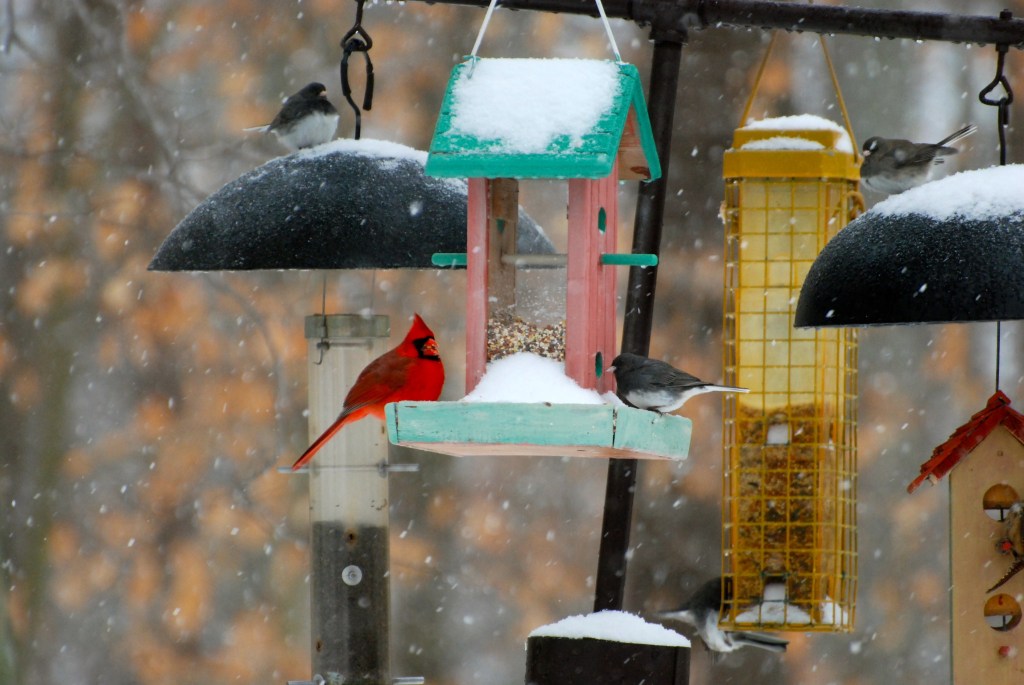



I live in the Northern Kentucky area near Cincinnati, OH and have been keeping up with this problem in the West for a few months. Glad I did because around mid-March I noticed an obviously affected siskin at my feeder. I checked the Kentucky Fish and Wildlife website and found that there was an alert for my state regarding the salmonella outbreak. So I would suggest that no matter what state you’re in, do some online digging. I took all my feeders (4) down on March 18th and it was really tough at first watching the birds come by wondering what happened, but they’re still around in the landscaping and trees. Though a bit sad, I do feel better that I’m not inadvertently killing them. I plan to do a good deck scrub this weekend and clean and disinfect the feeders. KY recommends only taking down for two weeks but I plan to leave down for a month or even a little longer.
What about bird baths and hummingbird feeders?
Excellent informative article. I certainly do not want to kill birds, especially with kind intentions. I usually put out 1 cup mixed seed during the winter months. I do this to supplemental feed, but once Spring arrives it is removed so as to not attract bears, and encourage the birds to forage. The constant filling of a bird feeder throughout the day, I am guessing is of the most concern but I will make sure to keep the feeder and ground beneath clean. Thank you.
I am sad to hear this. I clean my feeders and am cutting back to two in front two in back. I live on 5 acres. I also spread seeds on the ground. Have found no birds sick or dead.
Interesting. On March 24th my local Audubon (I live in Kitsap County, WA) posted a notice that it should be OK to reintroduce (clean) bird feeders as of April 1st. Better safe than sorry, but curious about the discrepancy.
Hi Kassie,
There is a lot of different advice out there. I think it is better safe than sorry, especially as birds move around. Here, I have seen advice to keep them down until mid-April.
Cheers,
Matt
Thank you, I had no idea this was currently happening. Although I’m in Michigan I’ll start a cleaning program immediately.
Interesting article! Makes sense, I just never thought about cleaning a bird feeder. I’m in MN. Is there an outbreak of salmonella here? How long should I leave my feeder down if that’s the right thing to do? I haven’t noticed any dead birds. Are there bird feeders that keep rain off of the seed? You’re right about the cost of seed going up- I just bought some yesterday.
I don’t need this to be posted to the public.
Is this recommendation for the whole country or more for the west? We live in Pennsylvania.
Thanks!
It is severe in the West but there have been outbreaks documented in North Carolina. It would be a good idea to take feeders down for a bit, wherever you are. Thanks for the question.
Does this mean we also should not put out water for birds or other wildlife? I have a small bird bath hanging on a tree branch. I have a large water tray on the ground for wildlife. Are either or both of these possibly contributing to the salmonella problem? It is a drought here, there will be no rain for months, and there is no other easily available water source. Lots of small animals pass through — squirrels, foxes, bobcats, domestic cats, racoon gangs, etc. Please advise. (I’m in Northern Calif. and the bird salmonella is bad here.)
It would be good not to concentrate birds at this time. Most recommendations are for feeders, as that particularly has birds feeding in one area. But to be safe — temporarily take down the bird bath.
Is this a problem only in the areas listed? I recognize that it always has the potential to happen anywhere, but some specific areas were listed, not the entire continent.
It is particularly bad in the western US this year. But birds travel. It could easily spread. Play it safe and temporarily take down the feeder.
I removed all bird feeders when I first became aware of
the salmonella outbreak with these birds!
But then I watched them come in early evening looking for their birdseed. Thought they were really hungry!
I put them back the next day.
This a.m. I took them away again after reading Kris’
informative article! Thank you, Kris!
When do you suggest we can fill our feeders again?
Thank you
Most experts are saying to wait a few weeks. I would ask your local state agency for guidance.
I don’t have a feeder but have been scattering seed on our gravel driveway since this winter. I feed 2 cups black oil w feeder select once a day. Does this sound problematic? We live out in the country.
I’m not sure what to think about this. Sure it’s important to clean feeders once a week but to quit feeding? I’m not so sure, especially in the winter.
This makes me want to cry. Good intentions with bad outcomes.